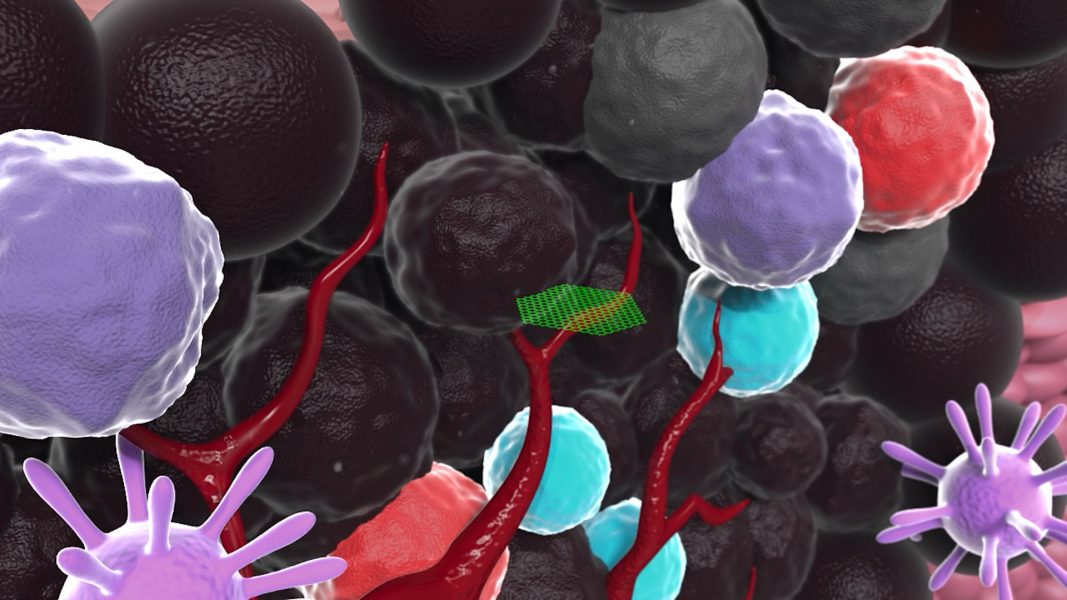Cancer therapy has come a long way, but effective tumor-targeting strategies are still needed for early diagnosis and precision treatment. However, existing tumor-targeting strategies cannot realize efficient targeting in vivo.
In Advanced Materials, Prof. Yanli Wang from Shanghai University and the Harvard T.H. Chan School of Public Health, Prof. Changquan Ling from Second Military Medical University in Shanghai, and co-workers describe a graphene-based nanoprobe that targets tumor cells through a novel cell membrane permeability targeting mechanism (CMPT).
The tumor cell nuclear targeting fluorescent nanoprobe (GTTN) is delivered to the patient by injection into the bloodstream. Once it enters the blood circulation, GTTN identifies tumor cells by the difference in membrane permeability and then aggregates at the tumor site. After entering the tumor cell nucleus, GTTN binds to the DNA and histones in the nucleus.
Pro. Yanli Wang: Unlike other strategies, which make use of enhanced permeability and retention (EPR) to target tumor cells, CMPT can identify tumor tissue at a very early stage and track the invasion and metastasis of tumor cells at the single-cell level, leading to a targeting efficiency of about 50% compared to less than 5% for EPR-based strategies.
To find out more about this in-vivo tumor-cell-targeting strategy, please visit the Advanced Materials homepage.

















